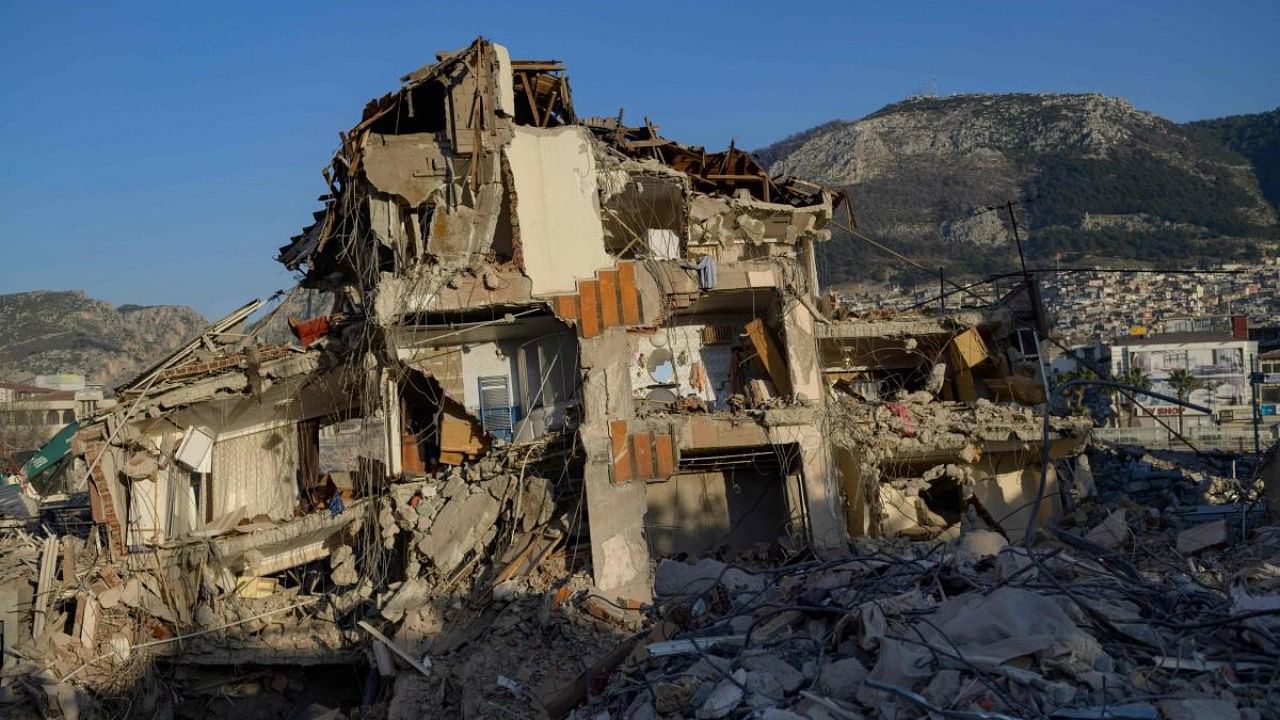
Nothing is ever deleted or forgotten on the internet.
Turkish officials learned that the hard way when grieving users began sharing old tweets and videos embarrassing for the government after last week's disastrous earthquake.
One clip shows President Recep Tayyip Erdogan congratulating officials for adopting an amnesty law in 2018 forgiving faults in nearly six million buildings that failed safety regulations.
Filmed during rallies in Hatay, Kahramanmaras and Malatya -- all areas badly affected by the February 6 disaster -- Erdogan boasted that he had "solved the problem" for residents to stay in their homes.
Erdogan's popularity over his two-decade rule rested on his ability to create an affluent new middle class and modern, affordable housing in an underdeveloped region.
But those comments, while well-received by people who avoided losing their homes at the time, now look ill-conceived.
Experts say that contractors' failure to comply with building codes in the earthquake-prone region explain the huge death toll, which has climbed above 38,000 in Turkey and approached 3,700 in Syria.
"Buildings kill people, not earthquakes. We must learn to live with earthquakes... and take measures accordingly," Erdogan tweeted in 2013, when he was prime minister.
That tweet has now been shared thousands of times.
In another viral video from 2011, former finance minister Mehmet Simsek explained that a special "earthquake tax" introduced after the 1999 quake that killed around 17,000 people in northwestern Turkey was used to pay for roads and hospitals.
The tax was intended to prepare cities to better withstand earthquakes.
A popular Twitter account, @ArsivUnutmaz, with 720,000 followers, has posted more than 50 similar videos, photos, and old documents since the tremor.
Many have been shared tens of thousands of times and received millions of views.
"We have seen many similar Twitter accounts created since the mid-2010s because, after the 2016 coup attempt, the government tried to reset the collective memory," said Sarphan Uzunoglu, communications professor at Istanbul's Bilgi University.
Following a media crackdown, "newspapers destroyed their archives to remove certain words they used in the past and that they now consider improper", Uzunoglu added.
Erdogan unleashed a sweeping crackdown after the 2016 failed coup that placed much of the media under the government's and its business allies' control.
Opposition and independent media have published images and reports damaging for the government, but these never make it on Turkish television news.
Mainstream channels broadcast a continuous loop of rescue footage in the first 10 days.
This is because of self-censorship, said Uzunoglu.
Turkey in October passed a law punishing the dissemination of "fake news" by up to three years in prison.
According to Reporters Without Borders, Turkey ranked 149 out of 180 for press freedom in 2022.
"All possible means are used to undermine critics," RSF said.
But it is not easy for officials to keep users from sharing archive images.
"These types of accounts can be created again and again," Uzunoglu said, adding that he believed some of them are fed by Erdogan's opponents -- including those in exile.
One viral video from 2019 showed Interior Minister Suleyman Soylu conducting an earthquake simulation exercise for Kahramanmaras residents.
The clip showed a damaged building in one shot, with a sign nearby saying Saffron Hotel.
Reality sadly caught up with fiction: an eight-storey hotel named Saffron in Kahramanmaras collapsed on February 6.